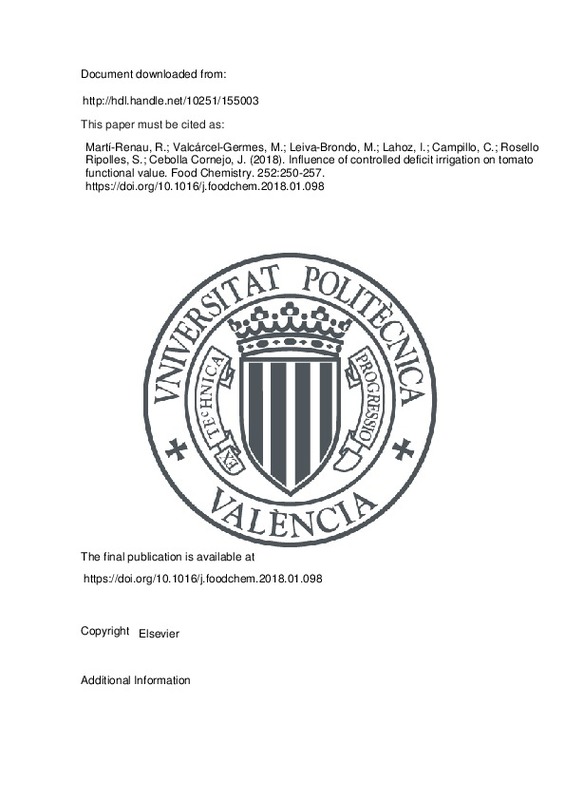JavaScript is disabled for your browser. Some features of this site may not work without it.
Buscar en RiuNet
Listar
Mi cuenta
Estadísticas
Ayuda RiuNet
Admin. UPV
Influence of controlled deficit irrigation on tomato functional value
Mostrar el registro completo del ítem
Martí-Renau, R.; Valcárcel-Germes, M.; Leiva-Brondo, M.; Lahoz, I.; Campillo, C.; Rosello Ripolles, S.; Cebolla Cornejo, J. (2018). Influence of controlled deficit irrigation on tomato functional value. Food Chemistry. 252:250-257. https://doi.org/10.1016/j.foodchem.2018.01.098
Por favor, use este identificador para citar o enlazar este ítem: http://hdl.handle.net/10251/155003
Ficheros en el ítem
Metadatos del ítem
| Título: | Influence of controlled deficit irrigation on tomato functional value | |
| Autor: | Valcárcel-Germes, Mercedes Lahoz, Inmaculada Campillo, Carlos ROSELLO RIPOLLES, SALVADOR | |
| Entidad UPV: |
|
|
| Fecha difusión: |
|
|
| Resumen: |
[EN] The effect of controlled deficit irrigation (CDI) on the accumulation of carotenoids, polyphenols and l-ascorbic acid was studied in conventional and high lycopene tomato cultivars. Plants were initially irrigated to ...[+]
|
|
| Palabras clave: |
|
|
| Derechos de uso: | Reserva de todos los derechos | |
| Fuente: |
|
|
| DOI: |
|
|
| Editorial: |
|
|
| Versión del editor: | https://doi.org/10.1016/j.foodchem.2018.01.098 | |
| Código del Proyecto: |
|
|
| Agradecimientos: |
|
|
| Tipo: |
|







![[Cerrado]](/themes/UPV/images/candado.png)


